Tower Crane
Explore the scientific concepts of forces and structures, pulleys, controlling machines and mechanical advantage.
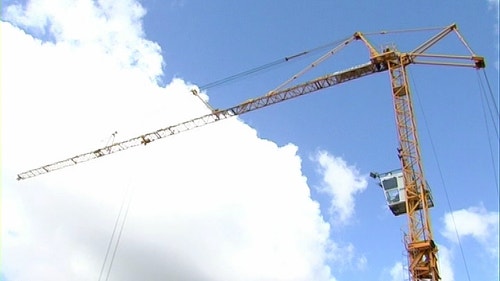
Connect
(5-10 Minutes)
Cranes are widely used to lift heavy objects and move them to different positions and heights. They are used on docks for loading and unloading ships. They are used in the construction industry for moving building materials. They are used in factories for moving goods and machinery. There are several different types of crane. Some are fixed to the ground, others can move around.
You will build a model tower crane and investigate how its function is influenced by changes to the pulley system.
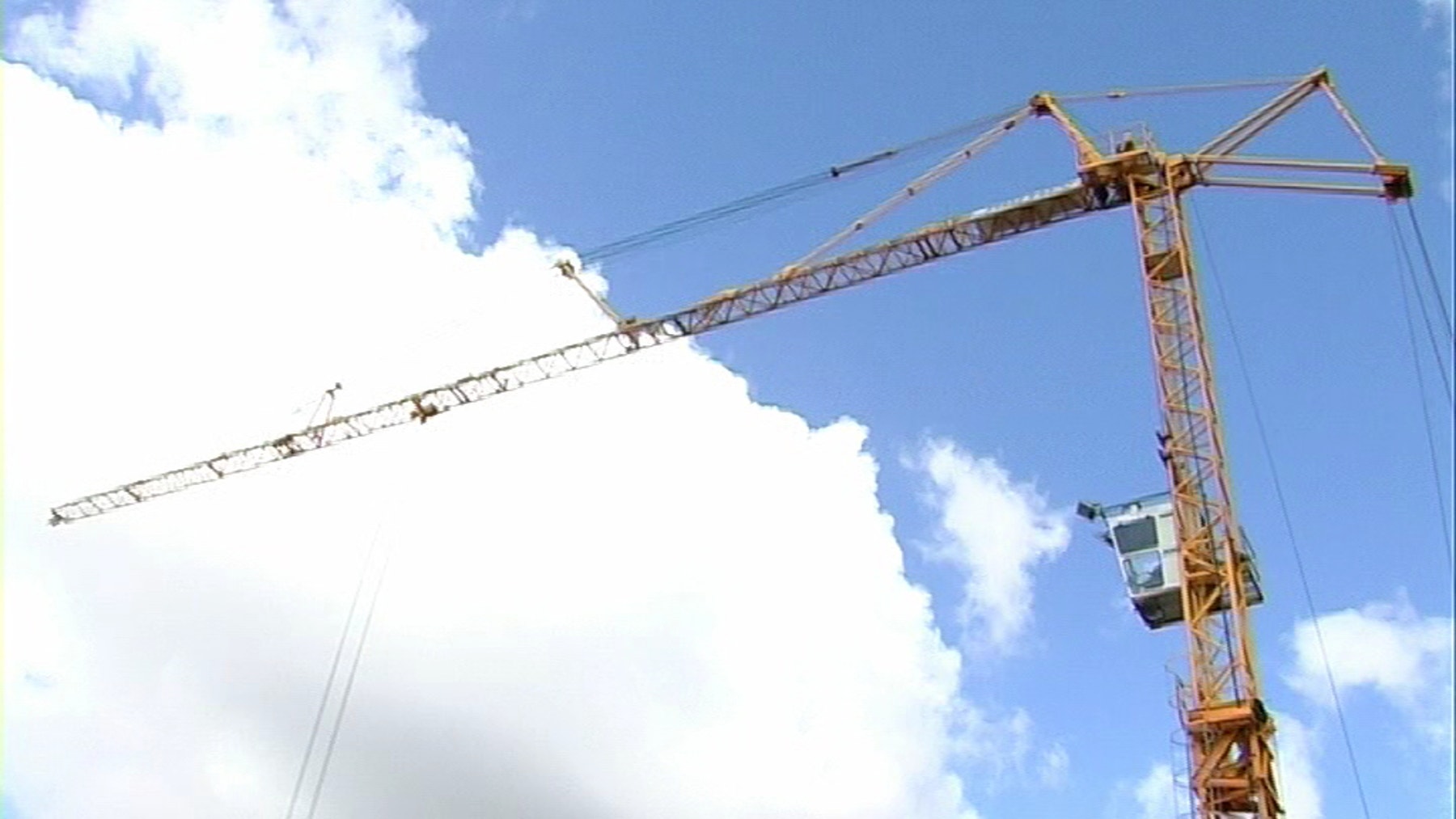
Construct
(20-25 Minutes)
Build the tower crane and Load
(building instructions 16A and 16B to page 28, step 38)
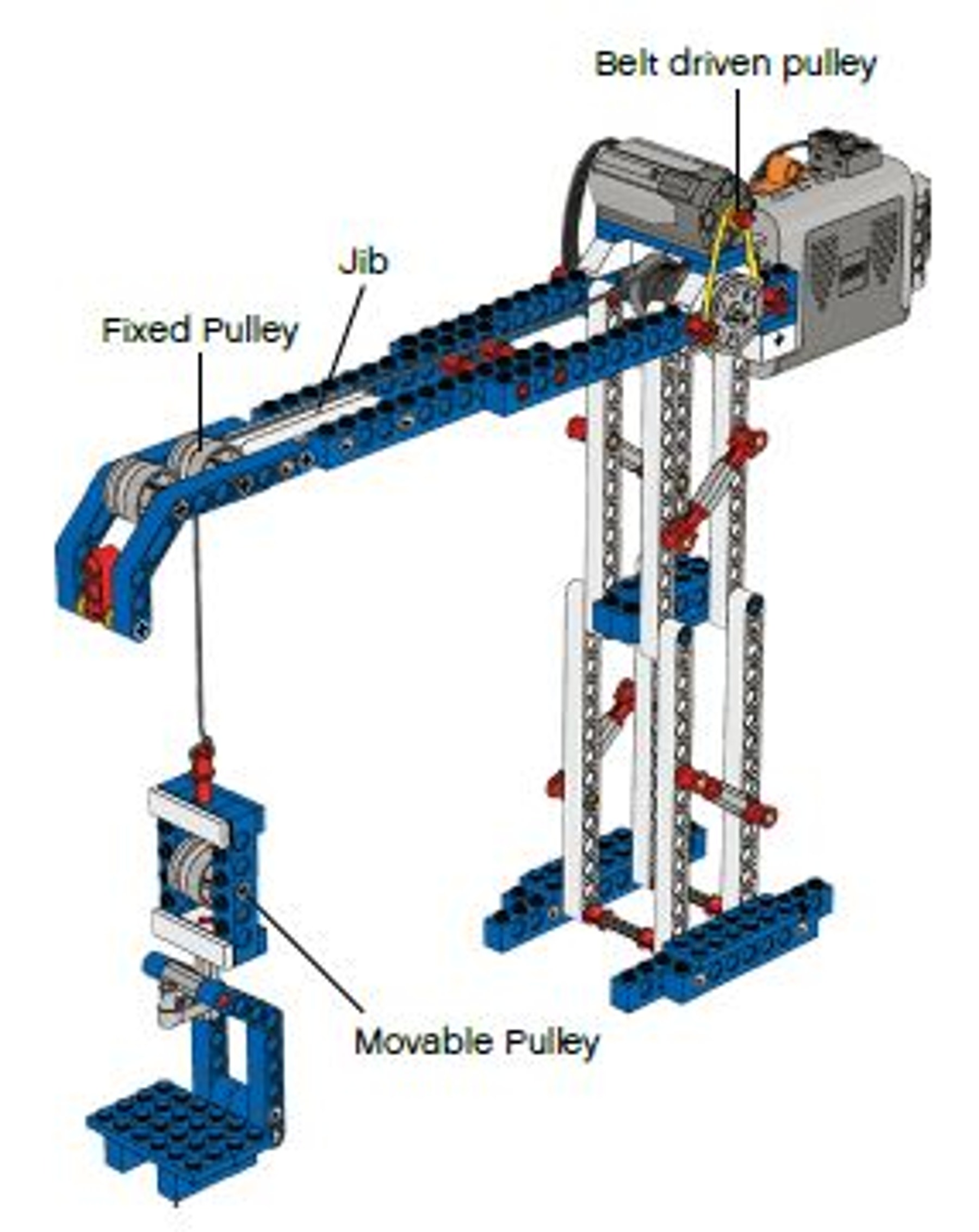
Place the Tower Crane on the lid on top of the blue LEGO® storage box.
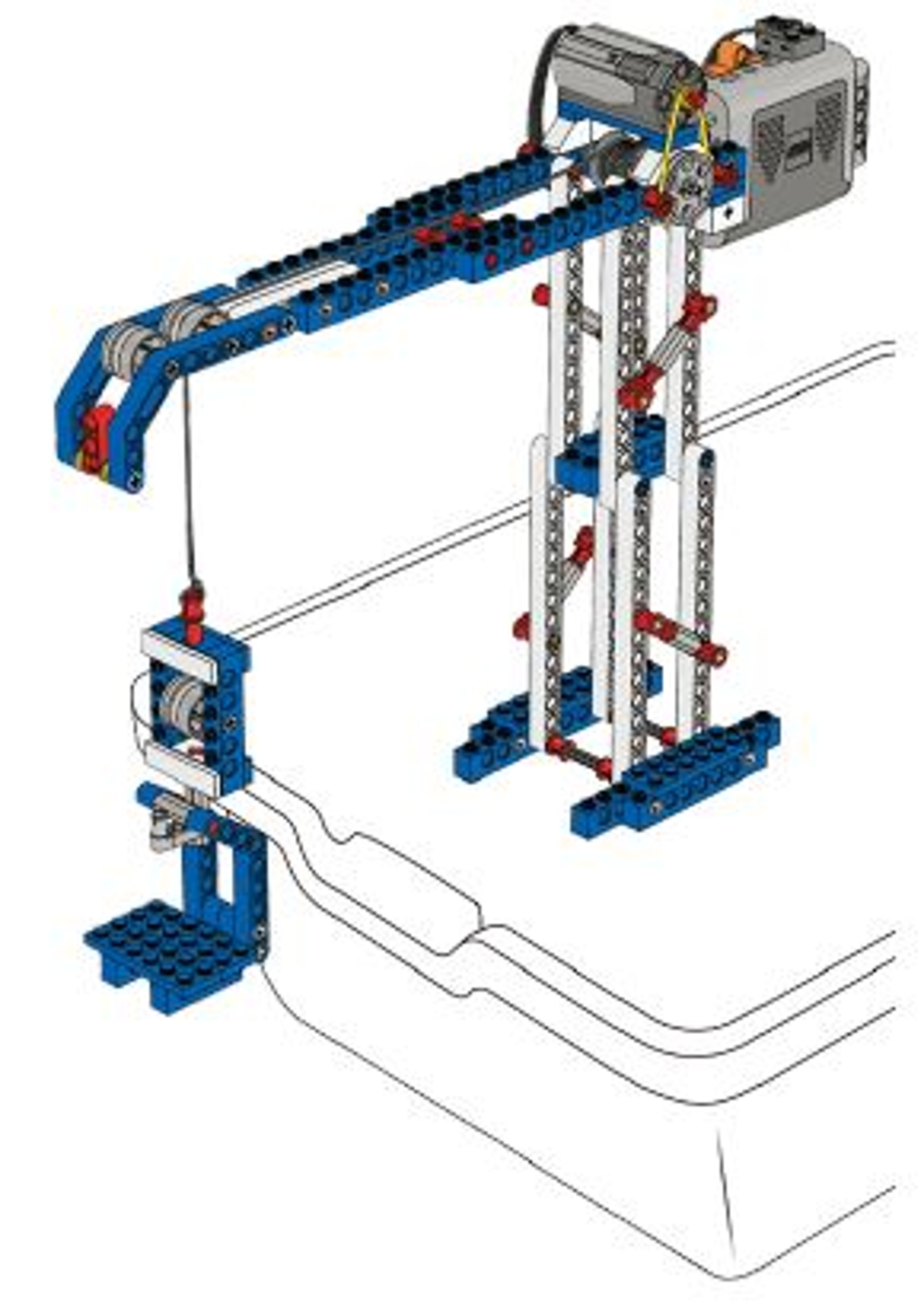
Turn on the motor by pushing the battery box switch forward and let the string unwind and then let the motor wind it back up again.
Make sure all pulley wheels turn freely.
Contemplate
(20-25 Minutes)
Why do cranes use pulleys?
Cranes use pulley systems because they can pull with less effort than is needed in a direct lift.
First, observe the mechanical advantage and predict with which speed pulley setup A will lift the load.
Record the mechanical advantage and your predictions on the worksheet.
Then test your prediction.
Record your findings on the worksheet.
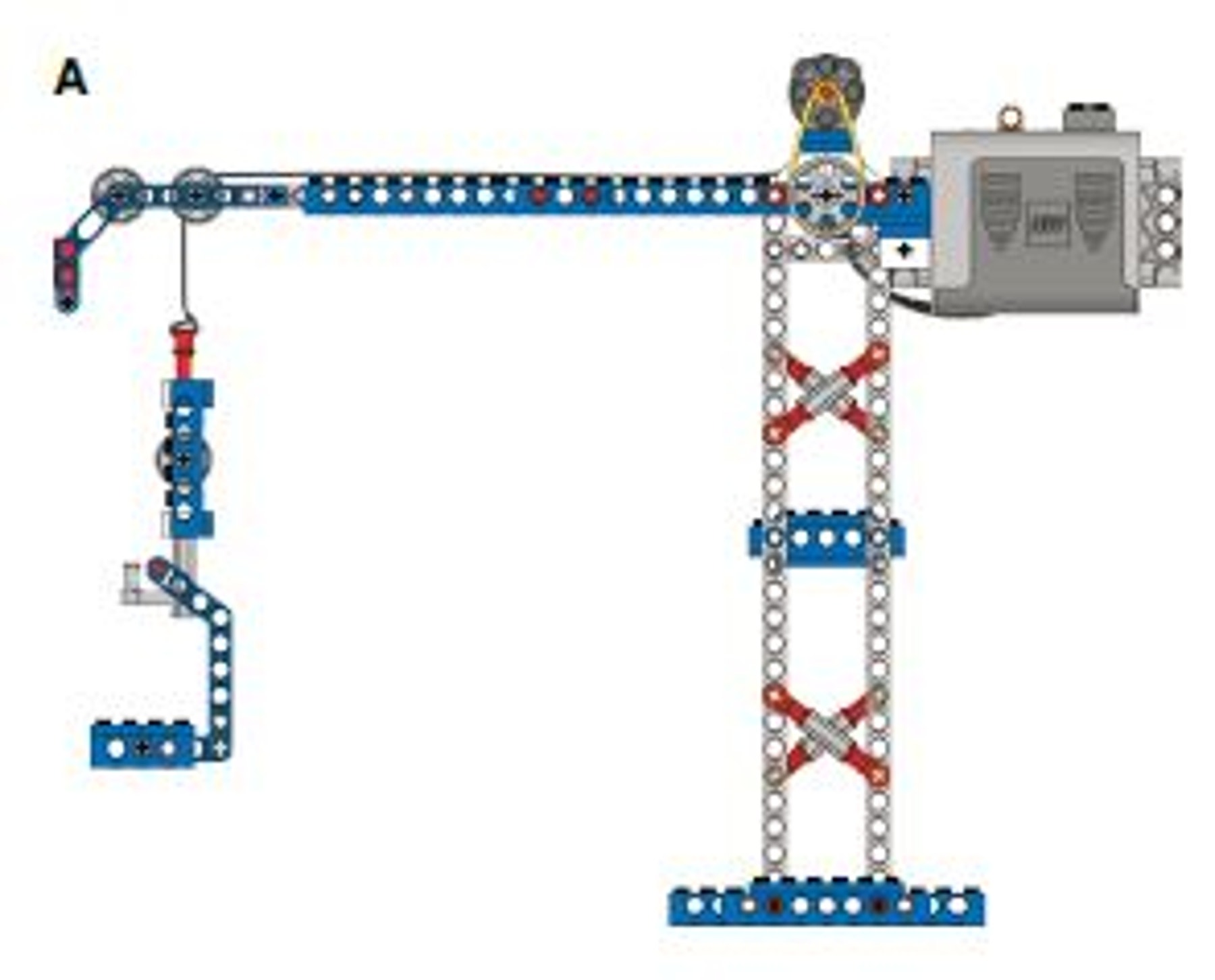
Hint:
To accurately measure force, use a force meter.
Hint:
The LEGO® string is 2 meters (≈ 2 yd) long.
Next, follow the same procedure for pulley setups B and C.
Pulley setup A (page 28, step 38) presents a mechanical advantage of 1. It functions with a speed of approximately 0.1 m/sec.
Pulley setup B (page 29, step 39) presents a mechanical advantage of 2. It functions with a speed of approximately 0.05 m/sec.
Pulley setup C (page 30, step 40) presents a mechanical advantage of 3. It functions with a speed of approximately 0.03 m/sec.
Hint:
You can find all of the formulas you need to perform this investigation in the principle models section for pulley.

Explaining the test results.
Pulley setup A is fast but presents no advantage in terms of needed force.
Pulley setup B is slower but has a mechanical advantage of 2, meaning that it only requires half the effort to lift the load. This also means that it will be able to lift twice the load using the same effort.
Pulley setup C is slower than both pulley setup A and B, but has a mechanical advantage of 3, meaning that it only requires one third of the effort pulley setup A needed to lift the load. This also means that it will be able to lift three times the load using the same effort.
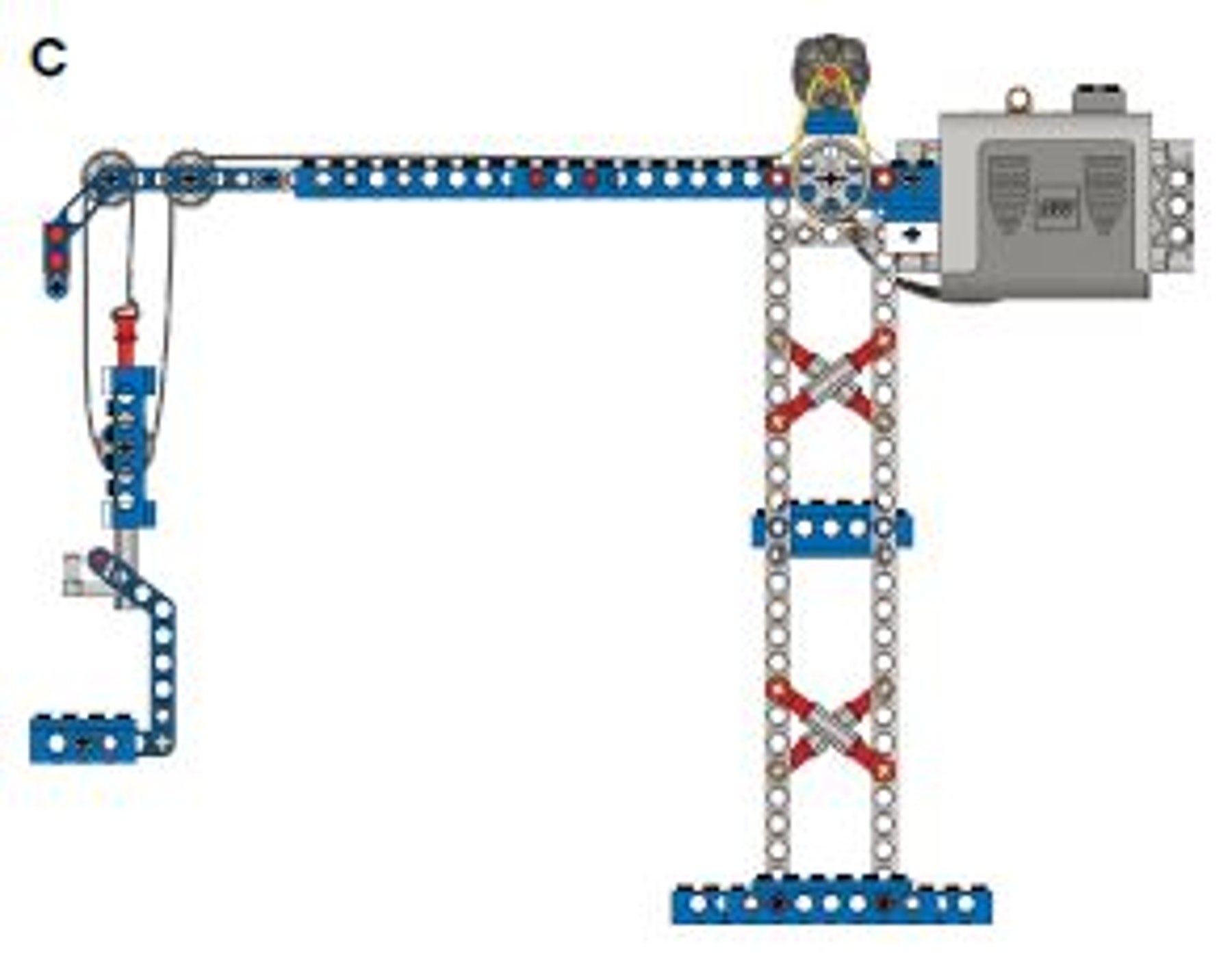
Continue
(25-30 Minutes)
Redesign needed?
Tower cranes are often built to match specific needs.
Now redesign the tower crane to make it the best in its class. We have highlighted some questions you could explore. Choose one area that you would like to investigate.
Then design a test that will help you explore how it functions and possible additional improvements you could make to your new tower crane. Remember to record all your test results.

When the students have chosen an area of interest sparked by the ‘what if’ suggestions ask them to:
a) Explain clearly the relevant part in the original model
b) Identify the key features of that part that makes it work in the way that it does
c) Consider which of these key features might be changed
d) Make possible changes to see their effect
e) Decide which changes achieve the desired effect
f) Record their new design and add notes to explain
a. What changes they made
b. Why they made them
c. The effect that the changes have had
Students can record their designs by sketching them, or by taking digital photos or video. It will help if students work collaboratively as they will be able to question one another as they move through the task.
Teacher Support
Students will explore the concepts of:
Science
Experiment and measure the effect of force on an object
Forces and structures
Scientific investigation
Simple machines – Pulleys
Technology
Assembling components
Construct simple machines
Controlling mechanisms – motors
Evaluating
Mechanical advantage
Engineering
Describe and explain parts of a structure and the effects of loads
Engineering design
Test and evaluate before making improvements
Mathematics
Determine percent of error
Select and apply techniques and tools to accurately measure length with appropriate levels of precision
Understand the metric system of measurement
9686 Simple & Powered Machines Set (two students per set recommended)
Measuring tape
Stopwatch
Weighing scales
Crosscutting Concepts
Cause and effect: Mechanism and explanation
Scale, proportion, and quantity
Systems and system models
Structure and Function
Stability and change
Science and Engineering Practices
Asking questions and Defining Problems
Developing and using models
Planning and carrying out investigations
Analyzing and interpreting data
Using mathematics, Informational and Computer Technology, and computational thinking
Constructing explanations and designing solutions
Obtaining, evaluating, and communicating information
Common Core Mathematics Standards
MP4 / 7.EE.B
Common Core English Language Arts
SL 6.1 / SL 6.4 / SL 6.6 / SL 7.1 / SL 7.4 / SL 8.1 / SL 8.4 / SL 8.6
RST 6-8.1 / RST 6-8.2 / RST 6-8.3 / RST 6-8.4 / RST 6-8.5 / RST 6-8.10
WHST 6-8.2 / WHST 6-8.4
Student Material
Share with:
 Google Classroom
Google Classroom



